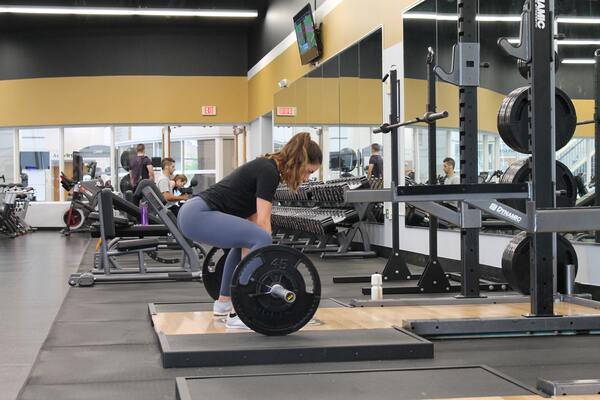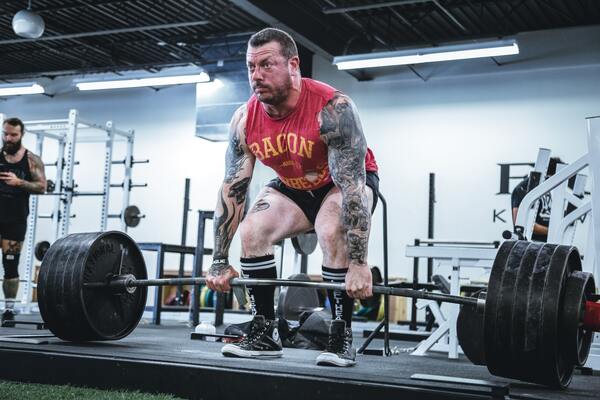When it comes to describing what lifting is all about, there’s no lift that does it better than the deadlift. Is the deadlift a leg exercise or a back exercise? This is one of the biggest arguments for and against strength training. It’s both.
Deadlifts are a leg exercise, more specifically a glute/ham-focused exercise, is the answer. However, not in the conventional sense. To build large muscles, we don’t deadlift. Instead, we use other lifts to enlarge the muscles, and the deadlift unites them all to strengthen the body.
Barbell Deadlift Benefits
We won’t spend too much time on the many advantages of deadlifts since most people are already aware of them. The deadlift uses nearly all of your body’s major muscle groups since it is a compound exercise.
You’ll be using your core and a variety of other stabilizers, including your forearms when it comes to grip strength, in addition to your legs and back, which do the majority of the heavy lifting.
You’ll undoubtedly burn calories and increase your endurance because it requires a full-body motion and a lot of energy (assuming you’re not using a weight that’s too heavy). As deadlifts are great for developing explosive strength, this also contributes to improved athleticism and vertical leap.
Your body will be more likely to release anabolic hormones if you deadlift heavier weights, which tend to use heavier weights. Over time, these will help you get leaner and more ripped while adding to the gains you already made from the lift. Overall, there are a lot of very good reasons why the deadlift is a staple in the lifting community.
Muscles Worked With Deadlifts
When it comes to the mechanics of joint movements, the deadlift consists of three main parts.
These are:
- Knee extension, at beginning of the lift
- Hip extension, in the straightening out and final lockout at the top
- Shoulder extension, in order to bring the arms back towards the top of the movement
The first two, knee extension and hip extension, are the primary joint movements. As a result, the deadlift is primarily a lower body exercise, with the majority of movement coming from the muscles in the legs. The back muscles are among the numerous muscle groups that are affected.
How To Deadlift
It’s a good idea to look at the mechanics of the movement more carefully in order to be better able to choose which day we should perform deadlifts. The deadlift is a complex lift that shouldn’t be taken lightly because it’s a compound exercise that uses a substantial free weight.
Maintaining proper form will not only help you get the most benefit from the exercise for your back and lower body muscles, but it will also help you stay injury-free. Always remember to warm up properly to get the most out of your workout.
It’s best to start out with a lighter weight or just the bar if you’re trying out the deadlift for the first time so you can get comfortable with the exercise.
- Starting position: Position yourself behind the barbell with your feet shoulder-width apart. Your knees need to be slightly bent, and the bar should be directly over the middle of your foot.
- By swiveling at the hips and pushing your butt backward, you can assume the starting position while maintaining a raised chest. As you descend by bending your knees a little more, your core should be active.
- Overhand grip with palms facing in is the best way to hold the barbell. Just above your knees, you should hold the barbell in your hands. Internally rotating your elbows will help you engage your back. Engage your shoulders and pull them down and back.
- Push through your heels while maintaining an engaged core. Your hands should only be used as hooks as you lift the weight. Unhinge at the hips last, then straighten the knees. Make sure the bar comes close to your shins.
- Pushing your hips forward and contracting your glutes will help you get to the top of the lift. But be careful not to arch your back.
- At the top of the movement, pause before slowly turning the movement around and returning to the starting position. Always maintain a straight back, an uplifted chest, and a hip-hinging motion.

Deadlifts In A Leg-Day Workout
Exercise sequencing is crucial when deadlifting on a leg day. Place deadlifts later in your workout and concentrate on more volume and reps for the best results. This strategy was chosen because it was physically and neurologically worn out.
Your risk of injury will increase and your workout will be less effective if you ignore this advice. Both outcomes are not desirable.
You can avoid both using this set of motions. Execute these leg-day exercises in the prescribed order (warm-up sets are not included). With the exception of deadlifts, choose a weight that will allow you to complete the specified number of reps while approaching muscle failure on all other movements.
Choose a weight for the deadlifts that will allow you to complete the desired number of repetitions with a few extra reps to spare.
Deadlifts In A Back-Day Workout
On back day, put the deadlifts first while saving them for last on leg day. Heavy deadlifts are the main course for a back day due to the significant mental and physical demands they place on your back. They are the steak in your post-workout meal; the potatoes come next.
Lower reps of the deadlift should be done on a back day for best results. The mantra “Go heavy or go home!” should be repeated, assuming your technique is sound.” You will only perform this one exercise using the volume and rest strategies used in a typical strength workout while also using heavyweight—never pushing the movement to muscle failure.
You can switch back to training variables that are focused on bodybuilding for the remainder of the workout. Warm-up sets are not included; instead, execute the moves in the prescribed order.
Like on leg day, pick a weight that will allow you to reach muscle failure by the specified target rep, but refrain from performing the deadlifts to failure. Leave one or two reps uncompleted.
Conclusion
It makes sense to perform deadlifts on the back and leg days. Putting deadlifts on a back day may mean spreading out leg training over more days in a week. Spreading back training over more days of the week may be the result of adding deadlifts to a leg day.
You should make this decision based on your personal preferences. There is no reason why you can’t perform a deadlift variation more than once per week. Using different variations to shift the focus of the exercise to different muscle groups will help you perform deadlifts twice or more per week more intelligently.
